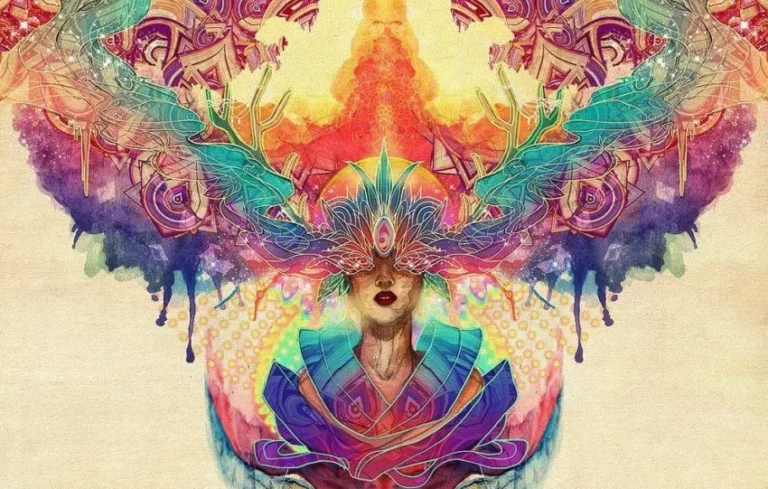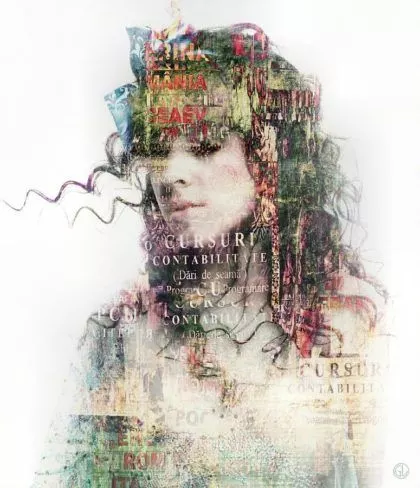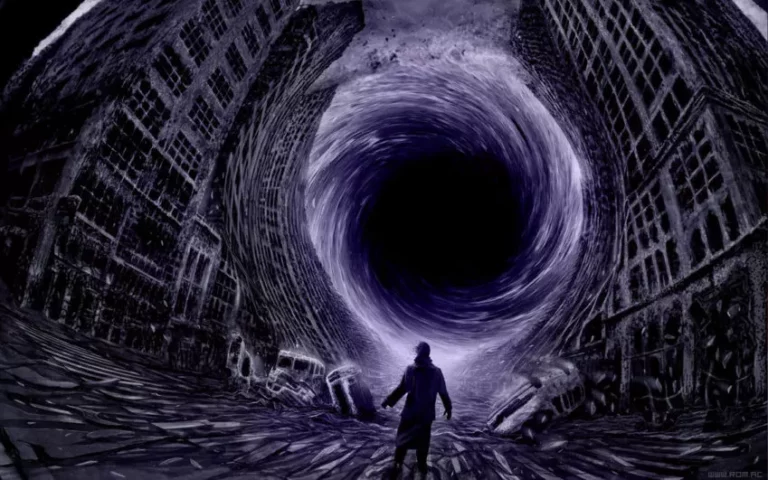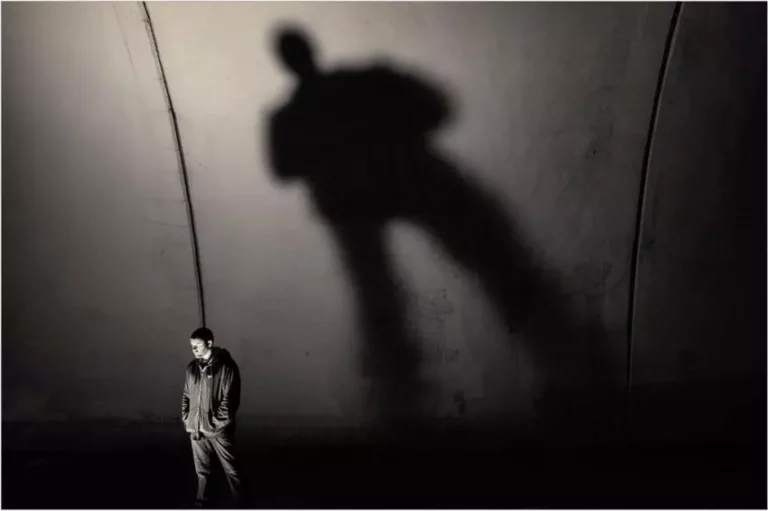“Wholeness is not achieved by cutting off a portion of one’s being, but by integration of the contraries.” ~ Jung
Balance—we all seek it. We all understand that achieving balance is healthy. But the majority of us do not understand why it is healthy.
Lost in that “why,” we tend to lose the underlying essence. We fall out of step with the way reality works. We inadvertently repress the darkness and desperately cling to the light. Interdependence becomes lost to codependence.
The answer to that “why” (why is balance healthy) is hidden within universal law: in Mother Nature’s “language older than words” (Jensen). In fact, it is dictated by it. Between life and entropy there is survival. Those seeking to survive in the healthiest way possible are those attempting to achieve this balance.
Integration of the contraries is no easy task. But it is vital if we seek to become the healthiest possible version of ourselves.
Here are seven signs that you may have achieved balance between shadow & light…
1.) You playfully don and discard your “masks”
“When emptiness is possible, everything is possible. Were emptiness impossible, nothing would be possible.” ~ Nagarjuna
You realize that the Self is masks all the way down perceiving delusions all the way up. You have a deep understanding of how, as Scott Adam’s said, “the human mind is a delusion generator, not a window to truth.”
As such, you have decided to have a playful nonchalance toward donning and discarding your many masks. Realizing that we are all merely butt-ends of a terribly funny cosmic joke, you have a deep sense of humor when it comes to embracing and questioning your many delusions.
The key is playful and flexible skepticism in the face of overly-serious and rigid dogmatism. By integrating your many masks (light and dark, tame and wild, finite and infinite) and embracing the fact that we are all delusional and merely clinging to whatever particular delusion gets us through the day, you bring balance to your self-development and compassion and open-mindedness toward the development of others.
2.) You have reconciled your demons
“To learn to creatively live with the daemonic or be violently devoured by it. We will decide our own destiny. Let us choose wisely.” ~ Stephen Diamond
You realize that we all have a dark side. We all have a Shadow. We all have inner demons that we ignore at our own great peril.
You understand that if you dissociate with or repress your shadow, then you will lack the wholeness it will take to be healthy, courageous, and self-overcoming. Therefore, you own the shadow. You incorporate the shadow with the whole so that you may become more holistic.
Making the darkness conscious is an artform. It’s a precarious endeavor, a delicate and dangerous undertaking. But you realize that no other practice is more vital to human flourishing. No other task is as critical for achieving balance.
As Jung famously said, “One does not become enlightened by imagining figures of light, but by making the darkness conscious.”
3.) You have discovered a balance between grandiosity and humility
“The serpent that stings us means to hurt us and rejoice as it does so. The lowest animal can imagine the pain of others. But to imagine the joy of others and to rejoice at it is the highest privilege of the highest animals.” ~ Nietzsche
You realize that we all have at least a low-grade grandiosity that, by nature, alters our perception of reality and makes it difficult to have an accurate assessment of our abilities, which causes us to overestimate our skills and underestimate the obstacles we face.
You understand that the problem isn’t the grandiose energy. The problem is what we do with that energy. Problems arise when our self-assessment is out of step with reality and universal laws. The secret ingredient is humility.
Ambition is natural. It’s okay that we all want to feel important and that we have the urge to be better. But when we focus that energy into impractical delusions, or we use it to falsely inflate ourselves, we prevent ourselves from truly improving.
Because we are lacking humility and beginning with the assumption that we are already large and great and worthy of attention and adoration.
But when we channel our grandiose energy into a project, into achieving a goal, or into solving complex problems, we invert our ego. Our grandiosity becomes grounded.
The energy impels us to hone our skills and improve upon our method. We are in dialogue with reality rather than out of step with it. Which teaches us deep humility.
The balance between grandiosity and humility sets us on a path toward self-improvement rather than tripping over our self-embellishments.
4.) You honor your anima/animus
“What is most beautiful in virile men is something feminine; what is most beautiful in feminine women is something masculine.” ~ Susan Sontag
If you are a woman, you are deeply in touch with your inner masculine (animus). If you are a man, you are deeply in touch with your inner feminine (anima).
You realize that by integrating your anima/animus, you become more interdependent and less codependent. You become more holistic, more in tune with universal forces. You are less likely to get stuck in culturally prescribed gender roles or outdated sexist thinking.
A man honoring his anima and a woman honoring her animus is truly a force to be reckoned with—what Nietzsche referred to as the “Primordial Unity.”
For they are that much closer to achieving cosmic heroism. They have become a force of integrated nature first and individual human second.
5.) You practice emotional alchemy
“Between stimulus and response there is a space. In that space is our power to choose our response. In our response lies our growth and our freedom.” ~ Viktor Frankl
You are determined to alchemize your emotions so that you may actualize healthy action.
You understand that emotional alchemy denotes a psychological transformation. When we are courageous despite fear, for example, we are practicing emotional alchemy. It’s about being proactively engaged in a healthier way while still honoring our core emotional state.
Imagine a firefighter standing outside of a burning building with a baby on the top floor. He would be a fool not to fear the inferno. For fear is a natural response to a deadly situation.
But, if he doesn’t act courageously despite the feeling of fear, the baby dies. So, he must first feel the fear and then act with courage, in order to do the right thing and save the baby.
You understand that this can be applied to almost any emotionally charged situation. Feel fear, act with courage. Feel road rage, act with humor. Feel grief, act with steadfastness.
Feel grandiosity, act with practical grandiosity. Feel envy, act with emulation. Feel jealousy, act with compersion. Feel insecure, act with confidence. Feel vengefulness, act with forgiveness.
Action is the thing. Awareness is the thing. Balancing your emotional state with healthy action is the thing. Confidence and practice will eventually lead to providence and brilliance.
6.) You have learned to transform setbacks (wounds) into steppingstones (wisdom)
“We are stronger than things are terrible.” ~ Jordan Peterson
You look at each of your failures like hard-earned rungs on the precarious ladder of life. Separately, these rungs are just rigid failures collecting dust in the attic of your suffering, but if you put them together you form a ladder that you can climb up into something magical and meaningful.
You are determined to make the obstacle the path. Thus, you practice transforming failure into fearlessness, demons into diamonds, wounds into wisdom. You view mistakes as steppingstones, pivot points, and serendipitous improvisation rather than as setbacks or hang-ups.
You realize that transforming wounds into wisdom is an act of love toward the darkest part of yourself. This act of love can dissolve mountains (obstacles). It can melt down hardened repression and reveal the sacred darkness beneath: your shadow.
It is then and there where you learn one of the most powerful secrets in the universe: the shadow can be your worst enemy or your greatest ally.
7.) You have come to terms with both your wormlike and godlike nature
“Too much of the animal distorts the civilized man, too much civilization makes sick animals.” ~ Jung
You understand that the human condition is fundamentally fallible, imperfect, delusional, hypocritical and prone to be mistaken. Therefore, you are circumspect about keeping your godhood in check by your wormhood and your wormhood in check by your godhood.
Torn between shadow and light, fear and love, finitude and infinity, you proactively redefine the concept of God, realizing that any human concept of God will always be inaccurate. Thus, you are vigilant about providing a sacred space for the continual rebirth of God.
Likewise, you provide a sacred space for your own self-overcoming. Your wormlike nature teaches your godlike nature humility. Your godlike nature teaches your wormlike nature higher consciousness. The balance between the two creates providence.
Both teach you the interdependent mastery of humility and humor. You are both humbled and empowered by your feeling of interconnectedness.
The “secret elixir” can then be flexibly excavated, and brought forth to the tribe, despite the absurd experience of being a creature torn between spirit and flesh, mortality and eternity, tragedy and comedy, darkness and light.
Image source:













